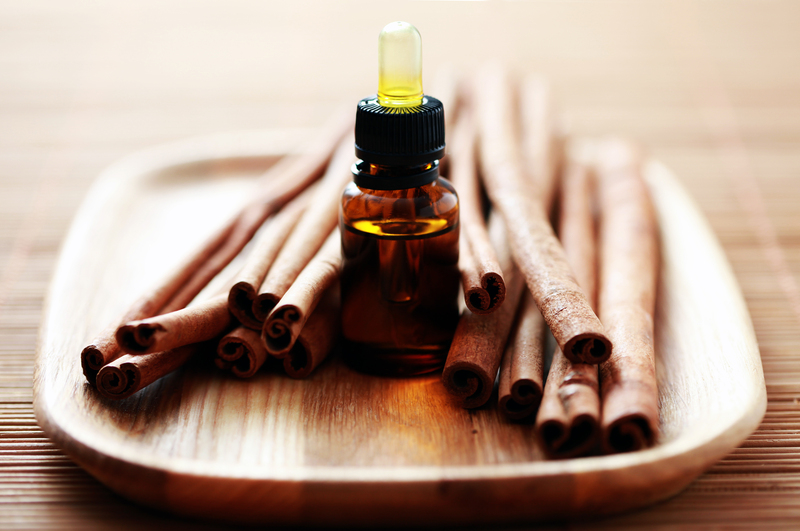Steps to Ensuring a Hygienic and Mold-Free Bathroom
Posted on 19/08/2025
Steps to Ensuring a Hygienic and Mold-Free Bathroom
A hygienic and mold-free bathroom is essential not just for aesthetics, but also for health and safety. Bathrooms, by their very nature, present the perfect breeding ground for mold, mildew, and germs, thanks to constant exposure to moisture, warmth, and limited ventilation. Left unchecked, these conditions can lead to unpleasant odors, staining, and even dangerous health issues such as respiratory problems and allergic reactions.
In this comprehensive guide, we'll walk you through the most effective steps to ensuring a clean, healthy, and mold-resistant bathroom. We'll cover daily habits, cleaning routines, ventilation strategies, and maintenance tips that collectively make all the difference.
Understanding Why Bathrooms Harbor Mold and Germs
Bathrooms are uniquely susceptible to biological growth and bacterial buildup because of:
- Consistent Humidity: Frequent showers and baths fill the air with steam, increasing humidity levels.
- Warm Temperatures: Combined with moisture, warmth creates an optimal environment for mold spores and bacteria to thrive.
- Poor Ventilation: Many bathrooms lack proper airflow, allowing dampness to linger.
- Porous Surfaces: Tiles, grout, silicone, and wood can absorb water, trapping it inside and encouraging mold growth.
- Neglected Nooks and Crannies: Hidden spaces--behind toilets, under sinks, and in corners--often go unnoticed, making them prime spots for dirt and fungus.
Therefore, maintaining a hygienic and mold-free bathroom requires a thoughtful strategy that focuses on consistent cleaning, moisture control, and proactive maintenance.

Step One: Adopt a Regular Cleaning Schedule
The cornerstone of any mold-free bathroom strategy is frequent, thorough cleaning. Without regular maintenance, moisture and organic residues build up, providing everything mold and bacteria need to flourish.
Daily Tasks to Prevent Mold and Maintain Hygiene
- Wipe Down Wet Surfaces: After each shower or bath, use a squeegee or towel to quickly dry tiles, glass doors, and fixtures.
- Hang Towels to Dry: Damp towels contribute to humidity and foster bacterial growth. Be sure to hang them up after every use.
- Keep the Shower Curtain Open: Spread out the curtain or shower door to allow it to air out and dry faster.
Weekly Cleaning for a Mold-Free Bathroom
- Scrub Sinks, Tubs, and Showers: Use a disinfecting bathroom cleaner and an appropriate scrub brush or sponge. Don't forget grout lines and corners!
- Clean the Toilet Thoroughly: Disinfect inside the bowl, under the rim, seat, and outer surfaces. A toilet brush with antibacterial cleaner works best.
- Disinfect Frequently Touched Surfaces: Faucets, handles, light switches, and doorknobs require regular attention to remove bacteria.
- Wash Bathroom Rugs and Mats: Launder these weekly to prevent mildew and odors.
Monthly Deep Cleaning Tips
- Descale Faucets and Showerheads: Remove mineral buildup with vinegar or a commercial descaler.
- Clean Exhaust Fans and Vents: Dust buildup can impede air flow; vacuum or wipe down as needed.
- Check for Hidden Mold: Inspect behind and under sinks, around window frames, and in any rarely cleaned spots.
- Launder or Replace Shower Curtain Liner: These can harbor mold, especially at the bottom where water collects.
Step Two: Control Moisture Levels
Controlling moisture is the second vital pillar for a hygienic, mold-resistant bathroom. Since bathrooms can never be completely dry, managing moisture is about minimizing dampness, accelerating evaporation, and reducing the time mold spores have to settle.
Tips for Effective Moisture Control
- Run an Exhaust Fan: Always use the bathroom fan during and for at least 15-30 minutes after showers or baths to vent moist air outside.
- Open a Window: If your bathroom has a window, crack it open during bathing and for a while afterward to boost air circulation.
- Use a Dehumidifier: In exceptionally humid climates or poorly ventilated bathrooms, a small dehumidifier can make a big difference.
- Seal Grout and Tiles: Apply a waterproof sealant every six months to prevent moisture from seeping into porous surfaces.
- Fix Leaks Promptly: Dripping faucets and leaking pipes are enemies of a clean bathroom. Repair them as soon as they're noticed.
- Remove Excess Water: Squeegee the walls and floor of your shower every time you use it to prevent water from pooling.
Step Three: Proper Storage and Decluttering
A neat, clutter-free bathroom is easier to clean and less likely to harbor mold and bacteria. Cosmetics, toiletries, and cleaning products left out can restrict air flow or collect moisture. The solution? Smarter storage!
- Store Items in Closed Cabinets: Keeping products off counters and inside cupboards reduces surface clutter and dampness exposure.
- Use Water-Resistant Storage Containers: Plastic or glass bins help protect items from getting wet and are easy to wipe clean.
- Avoid Carpets in the Bathroom: Bathroom carpets hold onto moisture. Opt for machine-washable bath mats and wash them regularly.
Step Four: Kill Mold and Bacteria at the Source
Even with your best efforts, mold can sometimes sneak in. Here's how to get rid of mold quickly and prevent it from returning:
DIY Mold Removal Solutions
- White Vinegar: Fill a spray bottle with undiluted vinegar, spritz it on moldy surfaces, and let it sit for at least an hour. Scrub with a brush before rinsing.
- Hydrogen Peroxide: Apply 3% hydrogen peroxide to affected areas, leave for 10 minutes, scrub, and wipe clean.
- Baking Soda: Make a paste with water, spread it on stains, and scrub after it dries. Baking soda is also useful for removing musty odors.
- Commercial Mold Removers: For stubborn patches, a specialized bathroom mold cleaner may be required. Always follow safety instructions and ventilate the area well.
Repeat these treatments as needed, especially after deep cleaning. For extensive mold issues across large areas, it's best to consult a mold remediation professional.
Step Five: Use Mold-Resistant and Hygienic Materials
When renovating or updating your bathroom, use materials designed to resist mold and foster cleanliness:
- Mold-Resistant Paint: Choose bathroom-specific paints equipped with mildew-inhibiting ingredients.
- Non-Porous Tiles: Glass or glossy ceramic tiles resist moisture far better than porous stone or unfinished wood.
- Waterproof Grout and Caulk: Select silicone-based caulk and grout sealers to keep water out of seams and joints.
- Easy-to-Clean Fixtures: Opt for simple, streamlined fixtures that don't trap water or grime.
Step Six: Maintain Proper Airflow
Good airflow is crucial for a mold-free, clean bathroom. Without it, even the most diligent cleaning routines may be undermined by lingering humidity.
Ways to Improve Bathroom Ventilation
- Install a Quality Exhaust Fan: Choose a fan with the right capacity for your bathroom size, and be sure it vents outdoors--not just into a ceiling cavity.
- Leave the Door Open After Use: This encourages cross-ventilation and quickens the drying of damp surfaces.
- Avoid Overcrowding: Remove excess shelving, baskets, or fabric that can block airflow.
Step Seven: Practice Good Personal Hygiene
You can clean your bathroom all you want, but if household hygiene falls short, germs and mildew will soon return.
- Rinse the Shower or Tub After Use: Wash away soap scum, hair, and other residues to prevent biofilm buildup.
- Replace Loofahs and Sponges Regularly: These tools harbor bacteria and mold, so swap them out at least every 3-4 weeks.
- Use Toothbrush Holders with Drainage: Water pooled in the bottom is a magnet for mold; choose a design that drains and can be cleaned easily.
Step Eight: Take Immediate Action Against Water Damage
Water damage--from leaks, flooding, or broken tiles--can rapidly make a bathroom unhygienic and mold-prone.
- Regularly Inspect for Leaks: Examine under the sink, around toilets, and on floors for signs of water problems.
- Replace Damaged Tiles and Caulk: Immediately repair any cracks or missing grout that might let water seep behind walls or under floors.
- Dry Out Accidents Fast: If you have a spill or overflow, fully dry the area and use a fan if necessary to prevent long-term damage.
Step Nine: Schedule Routine Maintenance
Prevention is better than cure, especially in the fight for a hygienic, mold-resistant washroom. Regular professional maintenance ensures everything is working well and no hidden problems are developing.
- Annual Plumbing Check: Book a plumber to inspect pipes and fittings for leaks or corrosion.
- Fan Service: Clean and test your exhaust fan annually, replacing it if it starts to work less efficiently.
- Tile and Grout Assessment: Have a professional inspect and reseal if necessary to prevent water intrusion.
Bonus Tips for a Fresh and Hygienic Bathroom
- Use Essential Oils: Diffuse a few drops of antimicrobial oils (like tea tree, eucalyptus, or lavender) to fight airborne germs and odors.
- Keep a Cleaning Caddy Handy: Store cleaning sprays, cloths, and brushes near the bathroom for quick touch-ups.
- Educate Your Family: Teach everyone the importance of bathroom hygiene; good habits make long-term results easier for everyone.

Common Mistakes to Avoid
While it's important to know how to maintain a mold-free, hygienic bathroom, it's equally vital to avoid mistakes that unintentionally worsen the situation:
- Neglecting Hidden Areas: Don't ignore baseboards, under sinks, or rarely used corners when cleaning.
- Using Too Much Water: Excessive mopping or washing can leave surfaces moist for too long; dry them promptly.
- Skipping Ventilation: Always use your exhaust fan or open a window after bathing--moisture left behind is an invitation to mold.
- Letting Products Expire: Old cosmetics and expired cleaners can go rancid or lose effectiveness; check dates regularly.
Conclusion: Achieving the Cleanest, Healthiest Bathroom Possible
Maintaining a hygienic and mold-free bathroom takes commitment, but the rewards are well worth the effort. By combining daily cleaning, moisture control, appropriate materials, good ventilation, and prompt repairs, you'll cultivate a fresh, safe, and inviting space for you and your family.
Whether you're battling a current mold issue or simply aiming to keep germs at bay, follow these steps and enjoy a bathroom that's as clean and healthy as it looks.
For more in-depth advice on bathroom care, cleaning products, or mold prevention, continue exploring our site or consult a qualified home maintenance expert. A hygienic, mold-resistant bathroom isn't just possible--it's within your reach.
```



